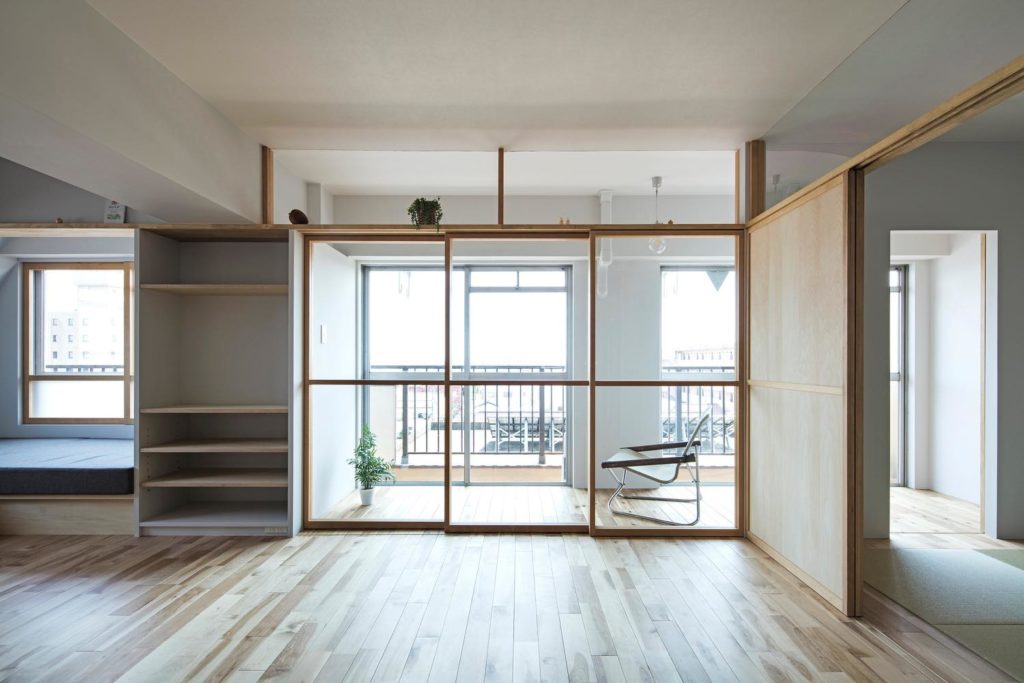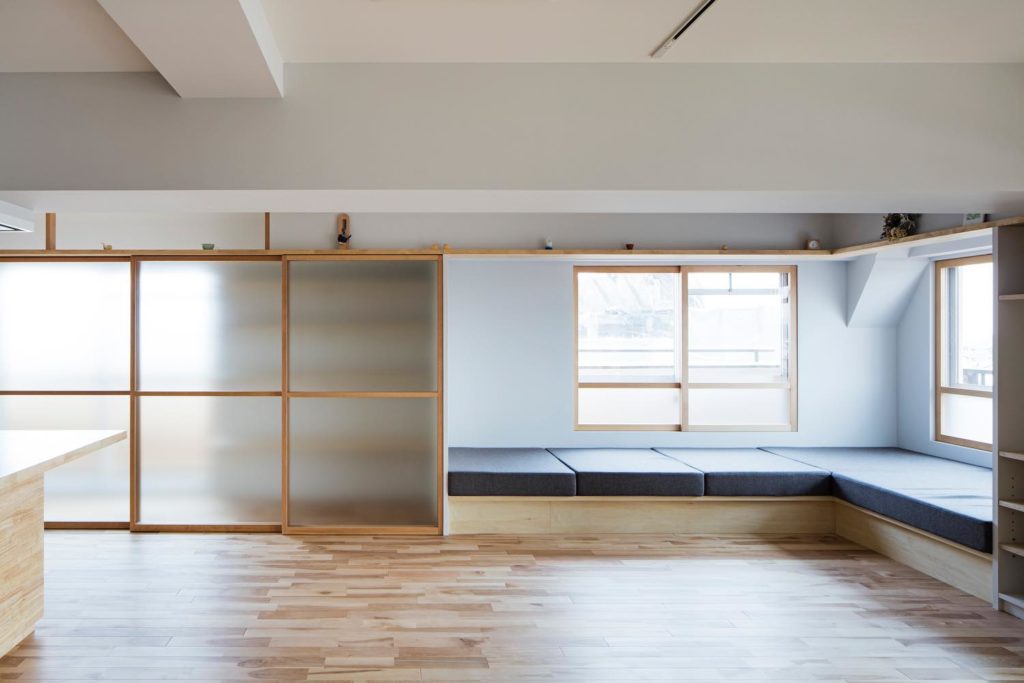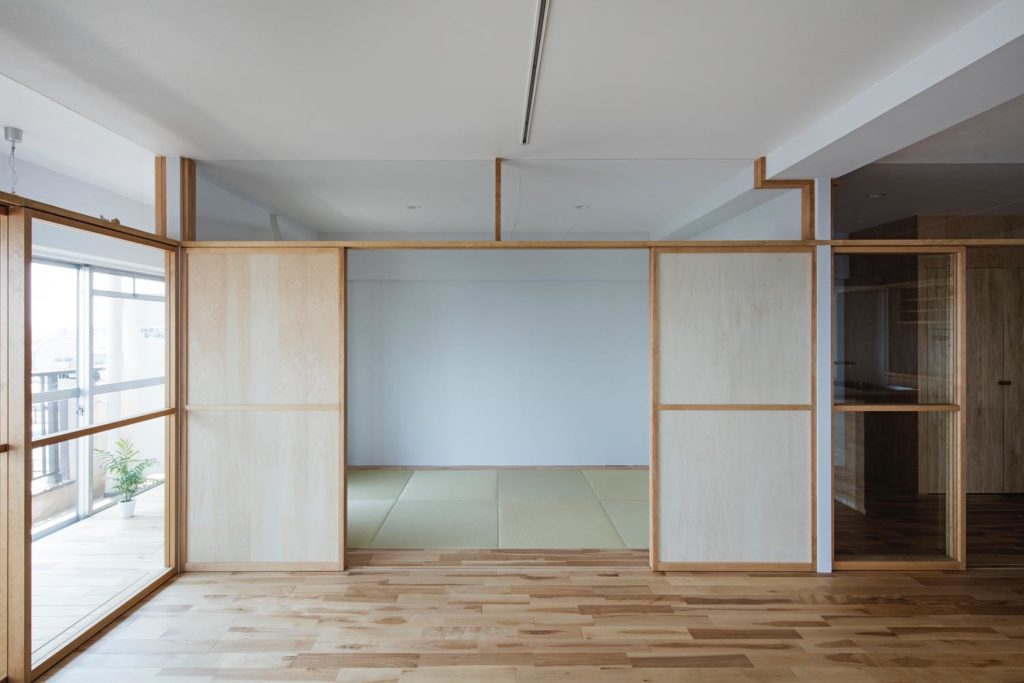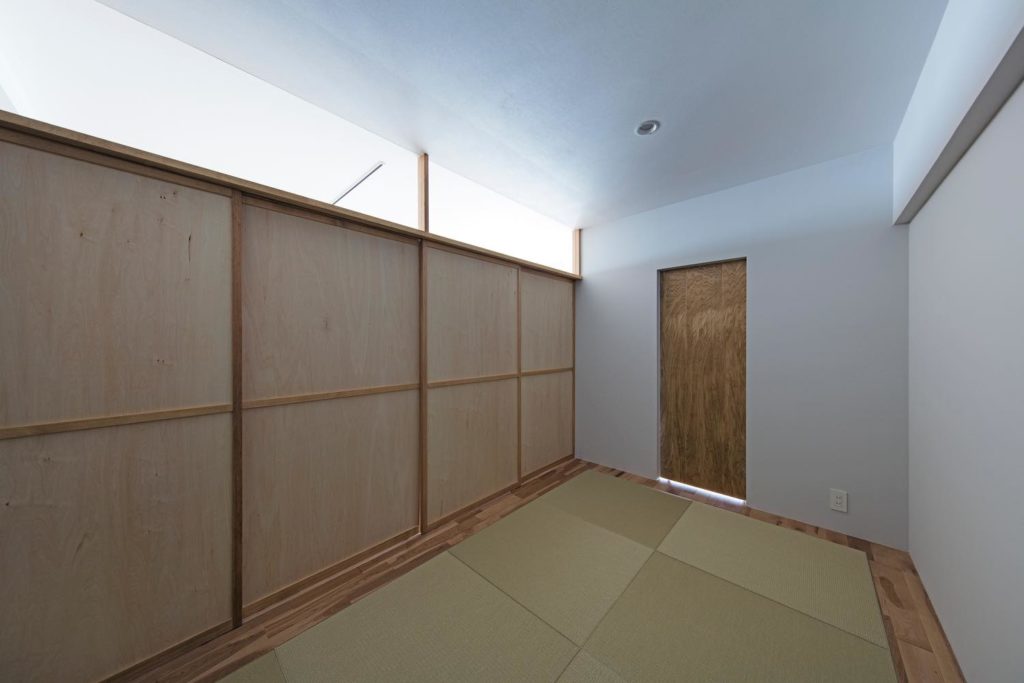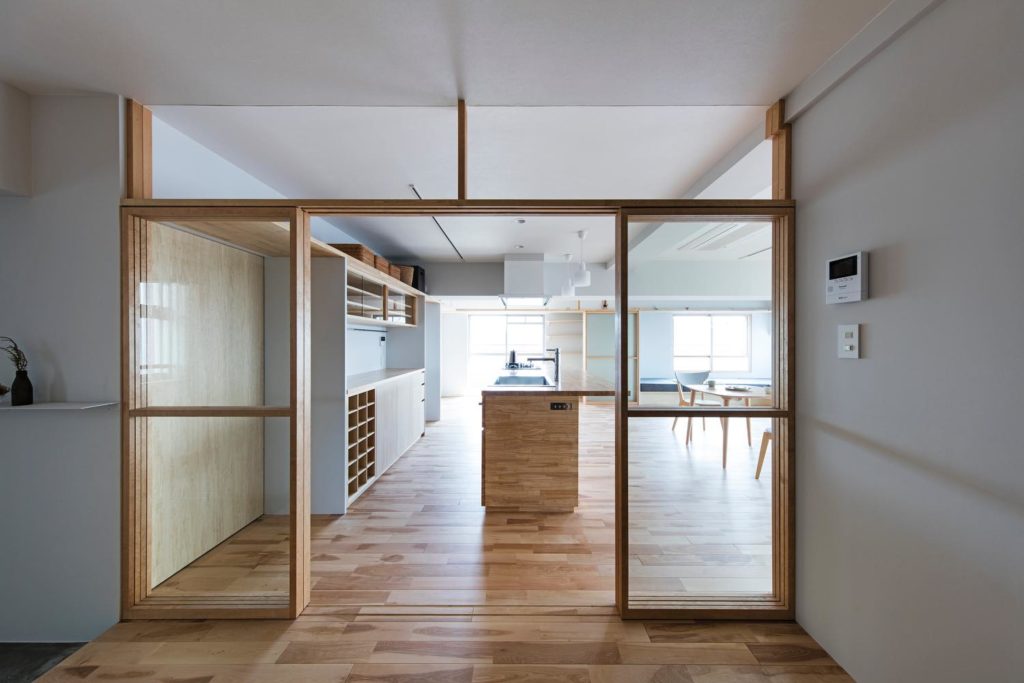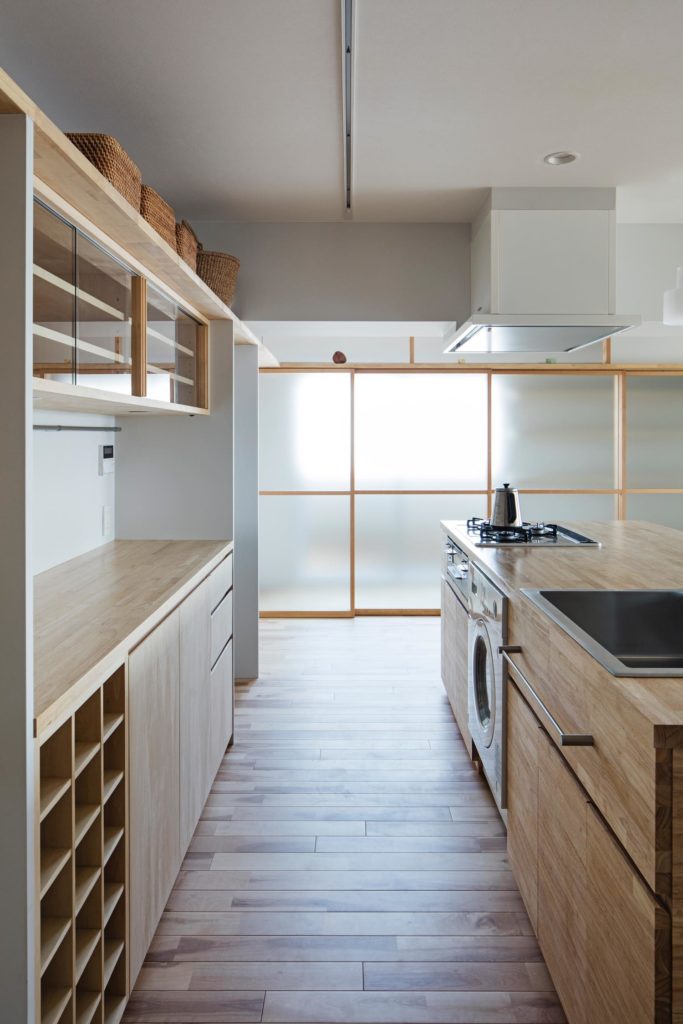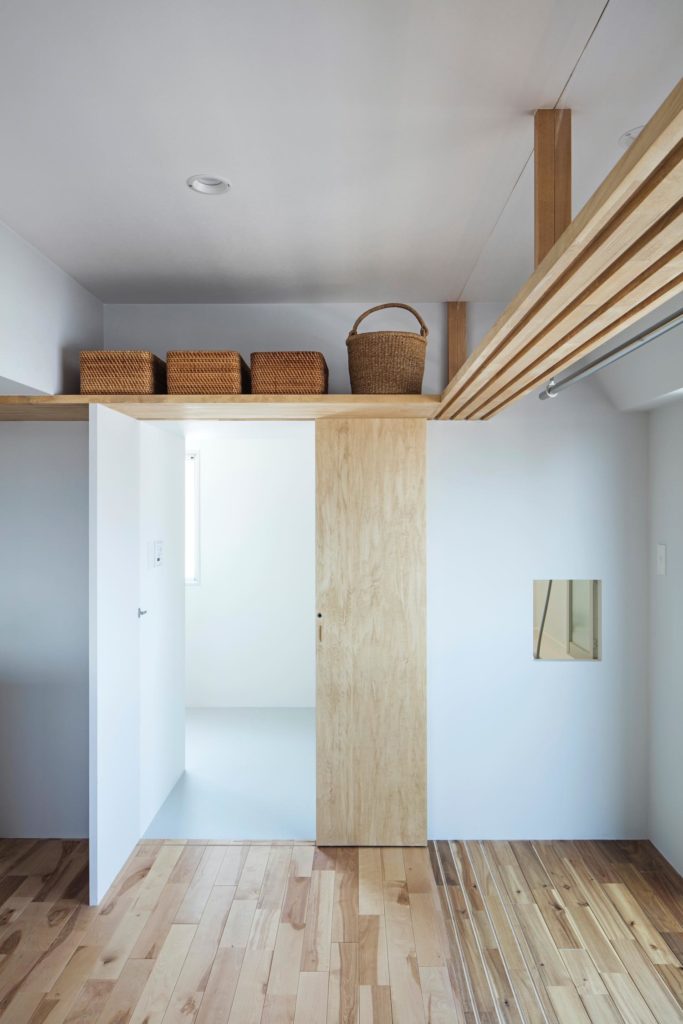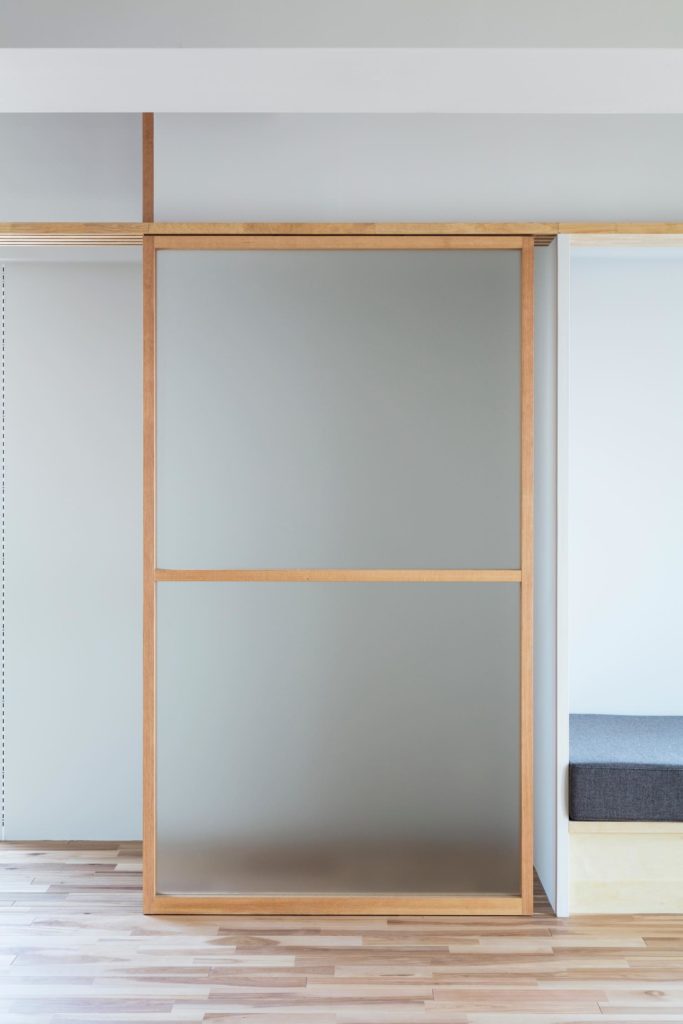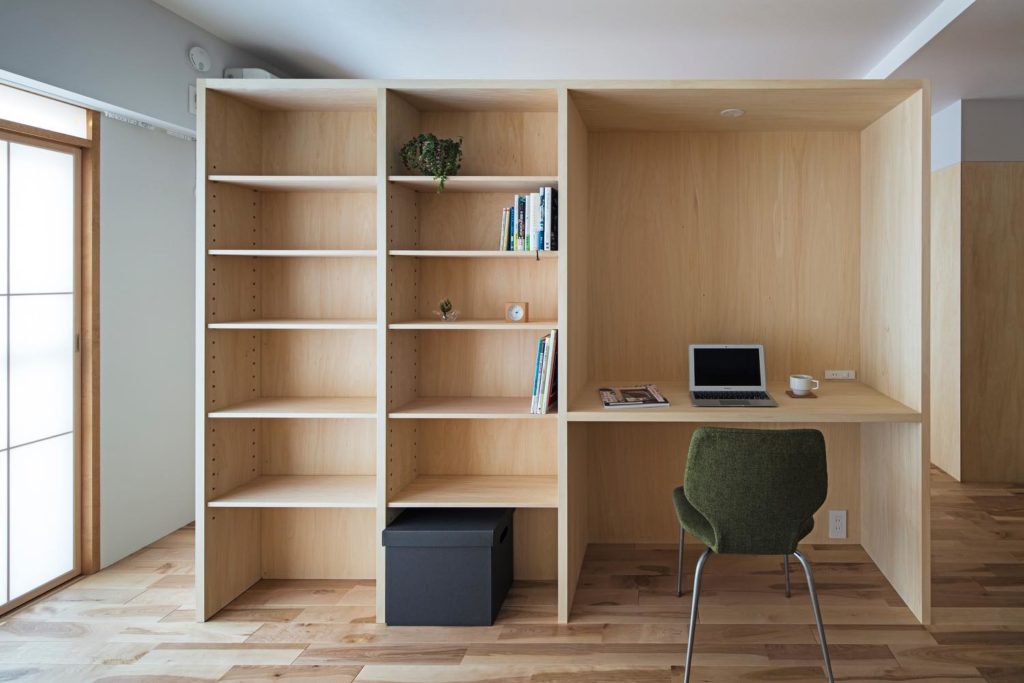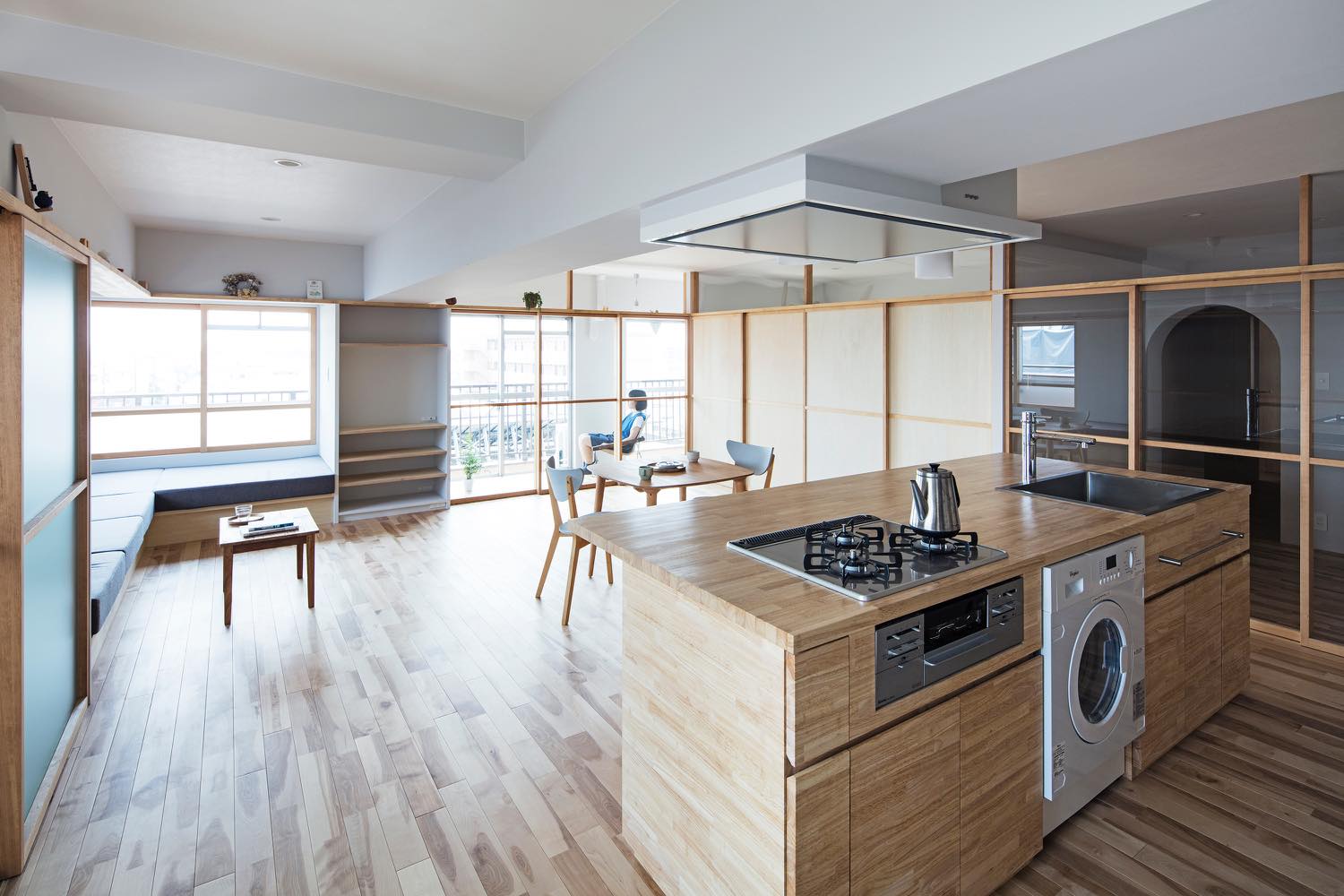

前の住人により2戸1化されていた、鉄筋コンクリート造マンションの1室の改修である。繋げられていた2戸のうち、角部屋の方を主室と水回りなど、もう一方を寝室と納戸などにあてた。主室は、半屋外的なルームテラス・ランドリーテラスやソファースペースなど、タイプの違う場を外壁沿いに配置し、入れ子状の構成をとっている。これらの間には、透明ガラス・フロストガラス・シナ合板を鏡板にした木製框戸を入れ、各々の場との距離や視線などの調整を行っている。框は見付け30mmで、木製建具としては非常に細いつくりになっている。これは中間層を設けたことによる、主室と外部の距離感を減じるためである。またこの框は、鴨居や欄間の枠とも同じ見付けであり、枠と框が一体的な透明性の高い境界面となる。寝室側は、シナ材によるフラッシュ戸と壁で統一している。主室側とは対照的に不透明な境界だが、開くたびに空間が展開していく奥性をつくりだしている。 建具は仕切るための道具だけでなく、場と場の多様な関係を取り結んだり、日射や温熱や通風などの環境因子を調節する境界面にもなる。制約の多いマンションや団地の改修では、建具の効果が発揮されやすい。そのような、建具の多元的(マルチプル)な境界面としての可能性の一端が立ち現れている。
Credit
設計|藤田雄介・辻佳菜子 / Camp Design inc.
施工|山崎工務店・アトリエ淳
写真|長谷川健太
Media 新建築 2017年8月号 >> BRUTUS 2017年7月15日号
It was a renovation of one condominium, which had been converted to two houses by the former residents. The main room is arranged in a nested configuration by arranging different types of places such as semi-outdoor room terrace laundry terrace and sofa space along the outside wall. Between these, a wooden door frame made of clear glass, frosted glass, plywood as a face material is put in, and the distance and the line of sight from each place are adjusted. The stile is found 30 mm and it is very thin as wooden fittings. This is to reduce the sense of distance between the main room and the outside by providing the intermediate layer. This frame is also the same as the frame between the ducks and the columns, and the frame and the frame are an integral transparent interface. The bedroom side is an opaque boundary as opposed to the main room side, it creates a deep feeling that the space develops each time it opens.
Fittings are not only tools for partitioning, but also interfaces to coordinate environmental factors such as solar radiation, heat and wind, combining various relationships between places and places. A part of the possibility as a multiple boundary of such a fitting is emerging.


